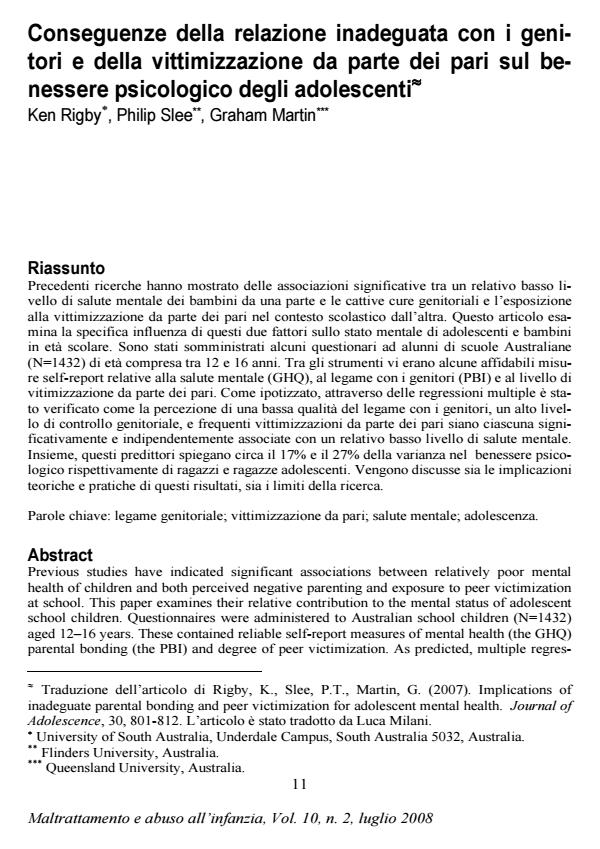Conseguenze della relazione inadeguata con i genitori e della vittimizzazione da parte dei pari sul benessere psicologico degli adolescenti
Journal title MALTRATTAMENTO E ABUSO ALL’INFANZIA
Author/s Ken Rigby, Philip Slee, Graham Martin
Publishing Year 2008 Issue 2008/2
Language Italian Pages 19 P. 11-29 File size 240 KB
DOI
DOI is like a bar code for intellectual property: to have more infomation
click here
Below, you can see the article first page
If you want to buy this article in PDF format, you can do it, following the instructions to buy download credits

FrancoAngeli is member of Publishers International Linking Association, Inc (PILA), a not-for-profit association which run the CrossRef service enabling links to and from online scholarly content.
Conseguenze della relazione inadeguata con i genitori e della vittimizzazione da parte dei pari sul benessere psicologico degli adolescenti Previous studies have indicated significant associations between relatively poor mental health of children and both perceived negative parenting and exposure to peer victimization at school. This paper examines their relative contribution to the mental status of adolescent school children. Questionnaires were administered to Australian school children (N=1432) aged 1216 years. These contained reliable self-report measures of mental health (the GHQ) parental bonding (the PBI) and degree of peer victimization. As predicted, multiple regres- sion analyses indicated that low levels of perceived parental care, high parental control and frequent peer victimization were each significantly and independently associated with relatively poor mental health. Together, they accounted for some 17% and 27% of variance in the mental health status of adolescent boys and girls, respectively. Theoretical and practical implications of these findings are considered. Limitations of the study are also discussed. Keywords: Parental bonding; Peer victimization; Mental health; Adolescence.
Ken Rigby, Philip Slee, Graham Martin, Conseguenze della relazione inadeguata con i genitori e della vittimizzazione da parte dei pari sul benessere psicologico degli adolescenti in "MALTRATTAMENTO E ABUSO ALL’INFANZIA" 2/2008, pp 11-29, DOI: